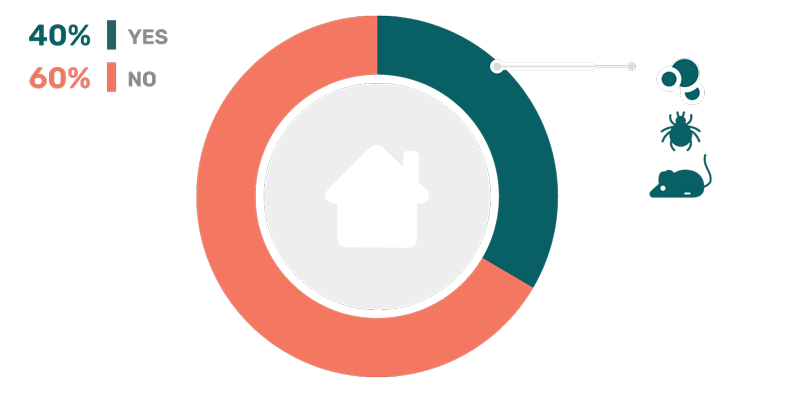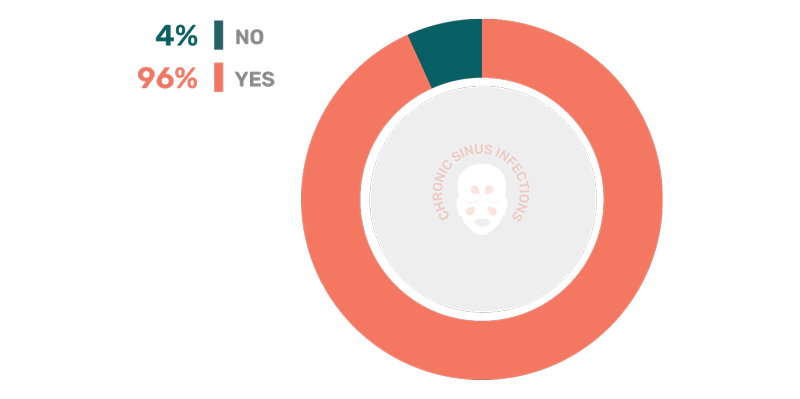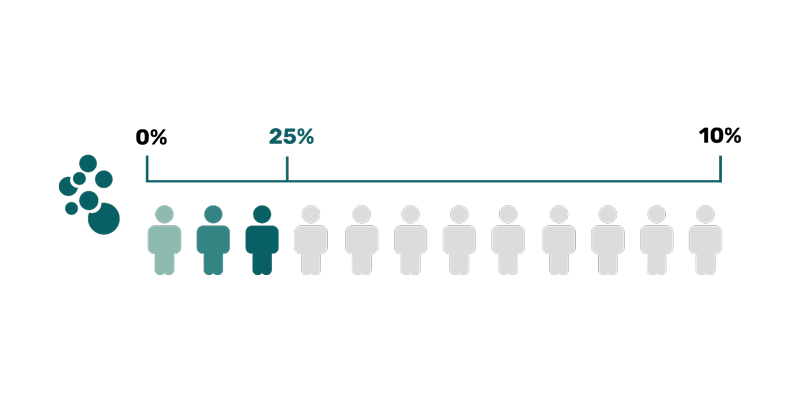Mold Statistics: What is The Most Common Toxic Mold Type Indoor?
We analyzed 1,300 air quality samples taken from homes and offices in Canada to answer the question: Which toxic mold is the most present in our homes?
Specifically, we investigated which home areas are most affected by potentially deadly mold types (Stachybotrys, Chaetomium, Fusarium, Penicillium/Aspergillus group and Alternaria).
And in this page, we are going to share what we discovered.
Summary of our Key Findings:
- The #1 toxic mold type found in homes is the Penicillium/Aspergillus mold group, with an appearance of 38% in all tested air samples.
- Stachybotrys, also known as black mold or toxic black mold, was found in 16% of all indoor air tested samples.
- From other (common) mold types, Basidiospores and Cladosporium were both found in 27% of all indoor air quality tests.
- Basements were the most affected by the Penicillium/Aspergillus mold group, with a presence of 71% in all air tests.
- Bathrooms were the most affected by the Basidiospores mold group, with a presence of 64% in all air tests.
- Only 11% of tested bedrooms didn’t have any mold type present.
- The #1 toxic mold type found in kitchens is the Penicillium/Aspergillus mold group, with an appearance of 57% in all tested air samples.
- Offices were the most affected by the Basidiospores mold group with a presence of 64% in all air tests.
- Indoors in Ontario and Quebec states in Canada were similarly affected by toxic mold types, with the leader Penicillium/Aspergillus, who appeared in 38% in all air quality tested samples.
- Only 12% of tested indoor air quality samples didn’t have any presence of mold.
Contents
- Indoor and Outdoor Mold Stats: What You Need to Know
- Mold in Basements is Not Just a Problem in the Summer
- Mold is Everywhere, Even In Your Bathroom
- Our Study Finds That One in Ten Homes Doesn’t Have Bedroom Mold
- The Surprising Statistics About Kitchen Mold
- Mold is on the Rise in the Living Rooms
- Stats Reveal the Hidden Threat of Storage Rooms
- The Office Mold Statistics You Need to Know
- Ontario vs Quebec: Who Wins the Toxic Mold Battle
- Methodology
- Other Mold Facts
Indoor and Outdoor Mold Stats: What You Need to Know
Toxic molds were first discovered in 1837 and can be found indoors as well as outdoors. Molds are plant-like organisms that release toxins to protect themselves from damage and can cause allergies and respiratory issues among other things. It is dangerous for humans if they come into contact with molds, so it is important to recognize signs of mold on your property or on your food and eliminate any sources of moisture and clutter.
Our results confirm the presence of toxic molds indoors and outdoors, while not each toxic mold type will be more present indoors.
Numbers explained:
Most common toxic mold types found in homes, ordered by presence:
- Penicillium/Aspergillus group (38%)
- Chaetomium (17%)
- Stachybotrys (16%)
- Alternaria (9%)
Only 12% of tested homes didn’t have any presence of mold
Most common toxic mold types found outdoors, ordered by presence:
- Penicillium/Aspergillus group (53%)
- Alternaria (17%)
- Chaetomium (4%)
- Stachybotrys (2%)
Only 6% of tested outdoor air samples didn’t have any presence of mold
Other Mold Types Found Indoors and Outdoors
Numbers explained:
Most common mold types found in homes, ordered by presence:
- Basidiospores (27%)
- Cladosporium (27%)
- Hyphal Fragment (25%)
- Smuts/Periconia/Myxomycetes (19%)
- Mitospores (17%)
- Pollen (15%)
- Ascospores (14%)
- Ganoderma (9%)
- Epicoccum nigrum (7%)
- Pithomyces (7%)
Most common mold types found outdoors, ordered by presence:
- Basidiospores (76%)
- Cladosporium (67%)
- Ascospores (59%)
- Hyphal Fragment (37%)
- Ganoderma (32%)
- Pollen (28%)
- Smuts/Periconia/Myxomycetes (28%)
- Epicoccum nigrum (12%)
- Mitospores (10%)
- Pithomyces (5%)
Mold in Basements is Not Just a Problem in the Summer
The basement is one of the most common places for mold to grow. Mold can be found anywhere, but basements are more susceptible because they are typically damp and dark.
Mold will eat away at your belongings and cause substantial damage to the structure of your home, but it’s far easier to prevent than fix if left untreated. Mold can grow in an unventilated basement because there is no air circulation and moisture will keep coming back into that space unless you solve the problem.
Toxic mold can be found in any environment, but some toxic molds are known to produce mycotoxins that can cause health hazards, including sickness (such as flu-like symptoms), memory loss, allergic reactions, and neurological problems like irritability and depression.
We have found that toxic mold types from the genus Penicillium/Aspergillus are the far most present mold types found in basements.
Toxic mold types in basements:
Most common mold types in basements:
Percentage of basements without any mold:

Numbers explained:
- Toxic mold types found in basements (ordered by presense) are: Penicillium/Aspergillus group (71%), Chaetomium (17%), Stachybotrys (17%) and Alternaria (9%).
- Common mold types in basements (ordered by presense) are: Basidiospores (69%), Cladosporium (56%), Hyphal fragment (39%), Ascospores (28%), Smuts/Periconia/Myxomycetes (22%), Pollen (15%), Mitospores (15%), Ganoderma (14%), Pithomyces (8%) and Epiccocum nigrum (6%).
- Only 8% of tested basements didn’t have mold present.
Mold is Everywhere, Even In Your Bathroom
Bathroom mold is a growing problem in the United States. According to the Environmental Protection Agency, toxic mold can be found in all 50 U.S states and throughout Canada. Mold can grow anywhere it can find moisture, such as your bathroom.
One study found that the average person spends more than three hours a day in their bathroom, but they might not realize that there are health risks when it comes to mold in bathrooms. Mold is most often introduced into bathrooms through water damage, where it can grow at rapid pace. Signs of mold growth are easily identifiable, if you are familiar with what to look for.
In our results we have found that Stachybotrys, the toxic mold type, was found in almost every 6th bathroom we have tested.
Toxic mold types in bathrooms:
Most common mold types in bathrooms:
Percentage of bathrooms without any mold:

Numbers explained:
- Toxic mold types found in bathrooms (ordered by presense) are: Penicillium/Aspergillus group (59%), Chaetomium (17%), Stachybotrys (16%) and Alternaria (10%).
- Common mold types in bathrooms (ordered by presense) are: Basidiospores (64%), Cladosporium (57%), Hyphal fragment (36%), Ascospores (26%), Smuts/Periconia/Myxomycetes (21%), Pollen (19%), Ganoderma (13%), Mitospores (11%), Epiccocum nigrum (7%) and Pithomyces (4%).
- Only 13% of tested bathrooms didn’t have mold present.
Our Study Finds That One in Ten Homes Doesn’t Have Bedroom Mold
Toxic mold and it’s accompanying spores and other irritating substances should not be found in a bedroom. Mold thrives on moisture and warm temperatures, both of which can be found in a typical bedroom. This is due to the materials that make up a bed; fabrics like cotton, wool, and silk all provide food for mold to grow on. The sheets you use also often contain moisture from sweat or leftover water droplets from washing the sheets.
We have found that only 11% of bedrooms we have tested didn’t have presence of mold.
Toxic mold types in bedrooms:
Most common mold types in bedrooms:
Percentage of bedrooms without any mold:

Numbers explained:
- Toxic mold types found in bedrooms (ordered by presense) are: Penicillium/Aspergillus group (62%), Chaetomium (11%), Stachybotrys (10%) and Alternaria (7%).
- Common mold types in bedrooms (ordered by presense) are: Basidiospores (60%), Cladosporium (48%), Hyphal fragment (31%), Ascospores (32%), Smuts/Periconia/Myxomycetes (20%), Pollen (17%), Mitospores (12%), Ganoderma (11%), Epiccocum nigrum (5%) and Pithomyces (3%).
- Only 11% of tested bedrooms didn’t have mold present.
The Surprising Statistics About Kitchen Mold
Mold is often found in moist, damp areas. One of the most common places for mold to grow is in kitchens. Mold thrives on food that has gone bad or been left out too long. If there are any leaks or standing water in your kitchen, you are at risk for toxic mold. Not only does the mold produce spores that can cause allergic reactions, it can also produce mycotoxins that can be poisonous to humans and animals alike.
There are many different types of toxic mold that grow in the kitchen, including Cladosporium, Alternaria, and Penicillium species.
We have found that toxic mold types from the genus Penicillium/Aspergillus are the far most present mold types found in kitchens.
Toxic mold types in kitchens:
Most common mold types in kitchens:
Percentage of kitchens without any mold:

Numbers explained:
- Toxic mold types found in kitchens (ordered by presence) are: Penicillium/Aspergillus group (57%), Chaetomium (14%), Stachybotrys (9%) and Alternaria (8%).
- Common mold types in kitchens (ordered by presense) are: Basidiospores (65%), Cladosporium (37%), Ascospores (28%), Hyphal fragment (26%), Smuts/Periconia/Myxomycetes (16%), Pollen (9%), Mitospores (9%), Ganoderma (12%), Epiccocum nigrum (6%) and Pithomyces (2%).
- Only 8% of tested kitchens didn’t have mold present.
Mold is on the Rise in the Living Rooms
Toxic mold can be found in many places, but one place it is hard to avoid is the living room. The main reason for this is that there are so many different types of surfaces in the living room, which are prime real estate for toxic mold. These surfaces include wood, drywall, carpeting, and other porous materials that serve as a home for the spores to grow.
In our results we have found that Chaetomium, the toxic mold type, was found in almost every 7th living room we have tested.
Toxic mold types in living rooms:
Most common mold types in living rooms:
Percentage of living rooms without any mold:

Numbers explained:
- Toxic mold types found in living rooms (ordered by presence) are: Penicillium/Aspergillus group (68%), Chaetomium (14%), Stachybotrys (9%) and Alternaria (9%).
- Common mold types in living rooms (ordered by presense) are: Basidiospores (71%), Cladosporium (56%), Hyphal fragment (37%), Ascospores (33%), Smuts/Periconia/Myxomycetes (26%), Pollen (18%), Mitospores (13%), Ganoderma (13%), Epiccocum nigrum (7%) and Pithomyces (7%).
- Only 8% of tested living rooms didn’t have mold present.
Stats Reveal the Hidden Threat of Storage Rooms
The problem of mold in storage rooms is not a new issue. There are many types of mold that flourish in the dark, humid environments that are found in storage units. If you have ever opened up an old box and discovered that it has started to grow fuzzy green patches, you know the unease that comes with discovering the potential infestation. The challenge for those with storage units is knowing how to prevent it from happening.
We have found that toxic mold types from the genus Penicillium/Aspergillus are the far most present mold types found in storage rooms.
Toxic mold types in storage rooms:
Most common mold types in storage rooms:
Percentage of storage rooms without any mold:

Numbers explained:
- Toxic mold types found in storage rooms (ordered by presense) are: Penicillium/Aspergillus group (66%), Stachybotrys (17%), Alternaria (12%) and Chaetomium (11%).
- Common mold types in storage rooms (ordered by presense) are: Basidiospores (63%), Cladosporium (46%), Hyphal fragment (37%), Ascospores (27%), Smuts/Periconia/Myxomycetes (15%), Pollen (14%), Mitospores (10%), Ganoderma (9%), Pithomyces (7%) and Epiccocum nigrum (6%).
- Only 11% of tested storage rooms didn’t have mold present.
The Office Mold Statistics You Need to Know
Mold found in office buildings is a major problem that can have long-term impacts on employees, as well as the financial security of the company. The heavy presence of mold in a place of work has been shown to cause a host of health problems, including respiratory conditions and allergic reactions. Mold not only irritates employees’ allergies, but also triggers asthma attacks which divert their attention from their job duties.
We have found that only 20% of offices we have tested didn’t have presence of mold.
Toxic mold types in office rooms:
Most common mold types in office rooms:
Percentage of office rooms without any mold:

Numbers explained:
- Toxic mold types found in office rooms (ordered by presence) are: Penicillium/Aspergillus group (53%), Stachybotrys (14%), Chaetomium (10%) and Alternaria (8%).
- Common mold types in office rooms (ordered by presense) are: Basidiospores (64%), Cladosporium (53%), Hyphal fragment (34%), Ascospores (26%), Smuts/Periconia/Myxomycetes (21%), Pollen (19%), Mitospores (18%), Ganoderma (12%), Pithomyces (6%) and Epiccocum nigrum (5%).
- Only 20% of tested office rooms didn’t have mold present.
Ontario vs Quebec: Who Wins the Toxic Mold Battle
Ontario is a province within Canada that is known for its rural landscapes, the Great Lakes, and smaller towns that are typically located in the heart of the country. Ontario is also known for its humid summers where mold thrives in the moist air. The climate of Ontario enables mold to grow on damp surfaces of buildings or other materials such as cotton and wool.
The humid climate in Quebec can contribute to mold growth, but it is not the only factor that affects this type of fungus’ prevalence. Mold spores are everywhere, and nearly all homes have them. It’s difficult to know whether you have a problem with mold because by the time it has spread enough to be visible, it has already caused irreparable harm to your health.
Numbers explained:
Most common toxic mold types found in Ontario, ordered by presence:
- Penicillium/Aspergillus group (38%)
- Chaetomium (16%)
- Stachybotrys (17%)
- Alternaria (9%)
Only 12% of tested homes in Ontario didn’t have any presence of mold
Most common toxic mold types found in Quebec, ordered by presence:
- Penicillium/Aspergillus group (37%)
- Chaetomium (18%)
- Stachybotrys (15%)
- Alternaria (9%)
Only 13% of tested homes in Quebec didn’t have any presence of mold
Other Mold Types Found in Ontario and Quebec
Numbers explained:
Most common mold types found in Ontario, ordered by presence:
- Cladosporium (29%)
- Basidiospores (26%)
- Hyphal Fragment (23%)
- Smuts/Periconia/Myxomycetes (20%)
- Mitospores (19%)
- Pollen (16%)
- Ascospores (14%)
- Ganoderma (9%)
- Epicoccum nigrum (8%)
- Pithomyces (7%)
Most common mold types found in Quebec, ordered by presence:
- Basidiospores (28%)
- Hyphal Fragment (27%)
- Cladosporium (24%)
- Smuts/Periconia/Myxomycetes (20%)
- Mitospores (17%)
- Ascospores (13%)
- Pollen (13%)
- Ganoderma (9%)
- Pithomyces (8%)
- Epicoccum nigrum (6%)
Methodology
For over 19 years, Mold Busters have been conducting non-viable indoor air quality assessments for residential and commercial properties to help ascertain their current indoor fungal ecology.
Our certified inspectors have collected air samples from Southern Ontario to Eastern Ontario and all of Western Quebec as part of our mold testing services. All collected spore trap samples have been sent to an accredited, third-party laboratory that specializes in microbial analysis. We have ensured our sampling equipment has been properly calibrated, all sampling media maintained in good condition and all indoor environmental requirements for accuracy in the analytical process adhered to.
The result has been an incredible collection of mold spore concentrations, broken down by genus, as it relates to indoor and outdoor environmental conditions.
A small number of these assessments, starting from 2018, have been catalogued, dissected and compiled into the statistics you will see below. Our proprietary Mold Spore Sweeper (MSS*) has combed through hundreds of our own laboratory reports, separating each spore type and its associated count by cubic meter. Furthermore, our MSS has classified every sampled location – whether it be a basement, office, or outdoor environment – and categorized the toxicity potential for each identified spore type.
This will be a dynamic statistics page that will update regularly as the MSS continues to work its magic behind the scenes in order to bring you this incredible dataset.
- Total of 1339 properties tested.
- Total of 990 outdoor samples were taken.
- Toxigenic species of mold we scan for during our indoor air quality tests are: Stachybotrys, Chaetomium, Fusarium, Penicillium/ Aspergillus group and Alternaria. In our process of giving recommendations for mold removal to our client, it doesn’t matter if there is one spore or 1 billion spores of toxigenic species, we always give suggestions for mold remediation. Client is safe only there is no toxic mold spore found indoors.
- Other mold types we scan for during our indoor air quality tests are: Ascopores, Basidiospores, Cladosporium, Epicoccum nigrum, Ganoderma, Hyphal Fragment, Mitospores, Pithomyces, Pollen, Smuts / Periconia / Myxomycetes. These mold types are classified as “elevated” based on the numerical value comparison to the baseline/outdoor sample. If they are higher indoors than outdoors, it’s considered elevated and recommendations can be made (ranging from improving ventilation, general cleaning or even remediation/disinfection).
Other Mold Facts
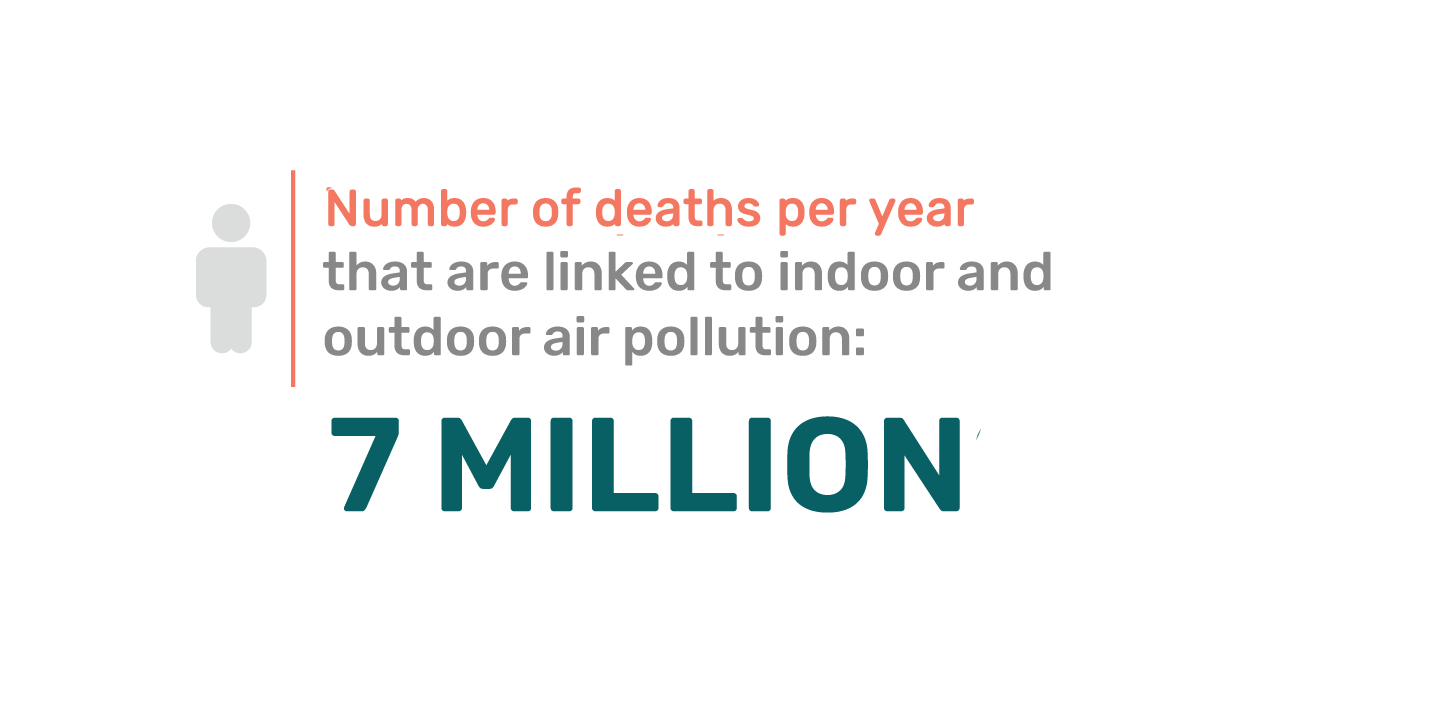
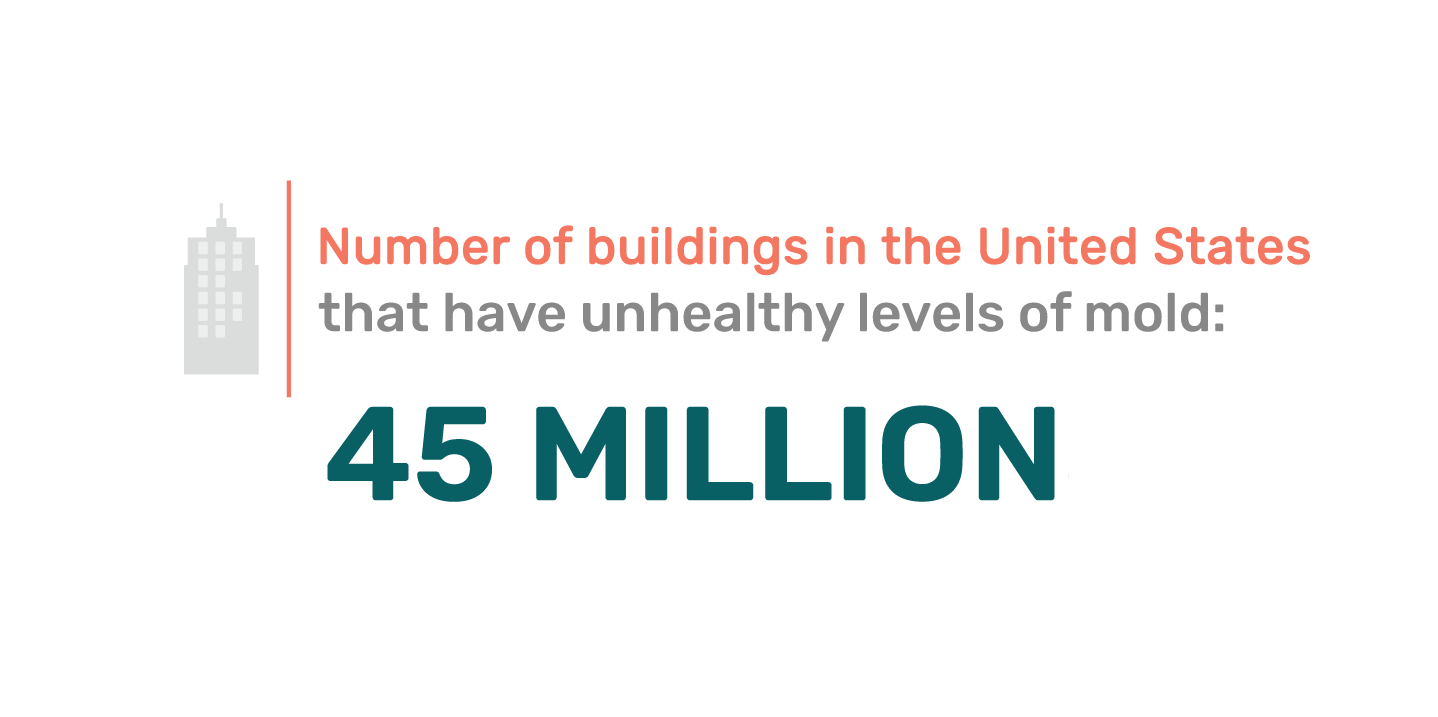
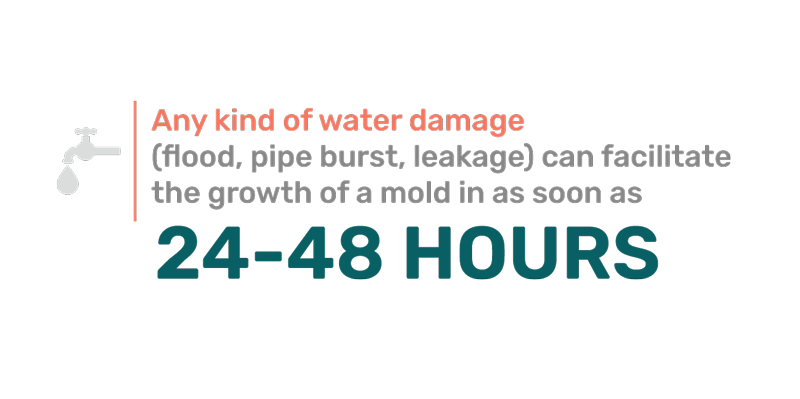
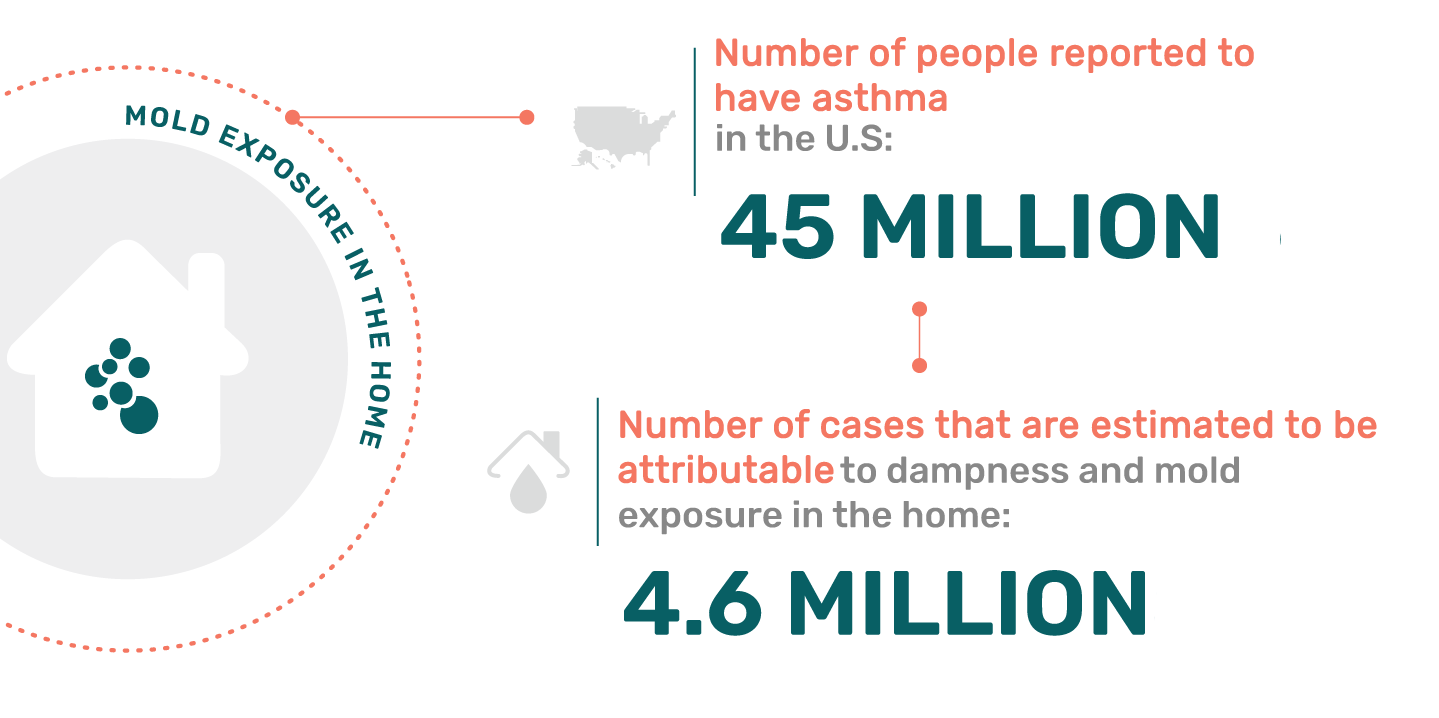
About 40% of asthma episodes are triggered by the household presences of mold, dust mites, or rats
(Center For American Progress, 2016)
